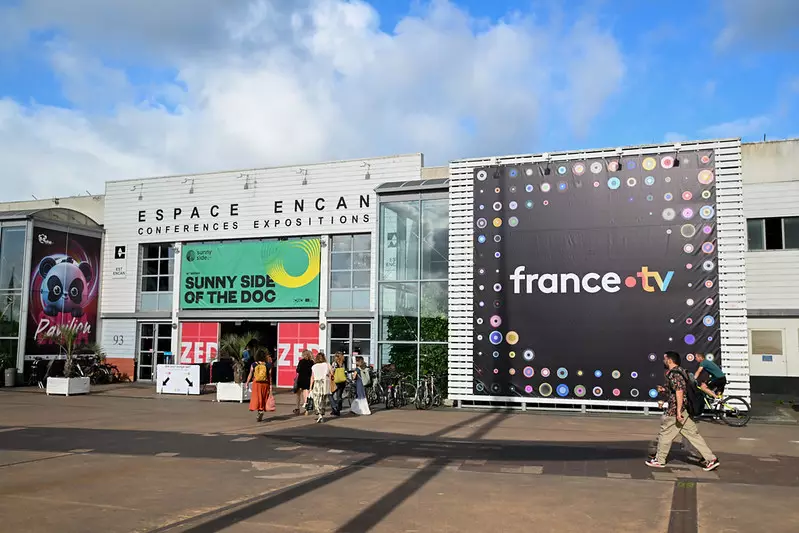The 36th edition of Sunny Side of the Doc, despite lasting a fleeting four days, struck a significant chord within the international documentary filmmaking community. Nestled in the quiet fishing town of La Rochelle, the event drew a remarkable crowd—over 2,100 participants spanning 60 countries, coupled with more than 1,000 companies, 85 exhibitors, and a hefty contingent of 260 executives representing broadcasters, streamers, and distributors. This spectrum was enhanced by focused delegations from diverse regions such as Africa, China, Brazil, Canada, and Spain, underlining the festival’s aspirational global inclusivity.
While the festival touts itself as a dynamic market and networking hub, its 2025 edition captured something deeper: a momentum pivoting toward brave, cross-border storytelling collaborations. Aurélie Reman, Sunny Side’s Managing Director, voiced this spirited ambition by highlighting a “forward-thinking programme” designed to tackle widening funding challenges and embrace fresh directions in documentary production. This strategic shift, moving beyond traditional networking toward fostering inventive partnerships, signals a welcome adaptability within an industry frequently resistant to change.
Celebrating Diversity but Questioning Accessibility
The awards this year reflected a vibrant variety of voices and themes—ranging from heartfelt explorations of arts and entertainment like *Leonard Cohen: Behind the Iron Curtain*, to urgent social investigations such as *In Front of Us*, to environmental narratives like *Kingdom of the Crocodile*. These distinctions, spread across categories like Science, History, Current Affairs, and Impact Campaigns, highlight the festival’s vital commitment to documentaries that deepen public understanding and catalyze social change.
Yet, while the laurels promote diversity, the underlying question remains: how accessible are these award-winning stories and creators outside the industry’s inner circles? The documentary market’s grand scale might appear inclusive on paper, but systemic barriers persist—funding inequalities between Global North and South producers, for example, or language and cultural hurdles limiting global reach. Sunny Side has made strides by welcoming delegations from Africa, Asia, and Latin America, but unless accompanied by structural reforms in distribution and financing, such gestures risk being symbolic rather than transformative.
Innovative Projects, but Are They Enough?
The selected winners underscore important thematic inclinations—artists, scientists, human rights activists, and environmentalists each have their moment to shine. Particularly noteworthy is the emphasis on emerging voices with projects like *Restless Farewell* from China and the *Mama* impact campaign from Ecuador, suggesting an eagerness to inject fresh perspectives into documentary discourse. Special awards like the AIDC and Pitch the Doc also bolster this push, spotlighting initiatives from relatively marginalized filmmaking hubs.
However, this enthusiasm must be met with scrutiny. Sunny Side’s compact schedule and market-driven model tend to favor projects that are already sufficiently polished or tied to recognizable broadcasters, which inadvertently prioritizes viability over radical innovation. While this filtration mechanism supports market success, it risks sidelining more experimental or grassroots efforts that might not yet appeal to mainstream financiers but are crucial for pushing documentary boundaries.
The Delicate Dance Between Networking and Genuine Change
Sunny Side of the Doc occupies an intriguing space between cinematic celebration and cold business marketplace. Its role in connecting creators with financiers and distributors is undeniably crucial in sustaining the documentary ecosystem. However, the balance between fostering authentic storytelling and catering to commercial imperatives often tilts uncomfortably toward the latter. This year’s acknowledgment of the “funding challenges” is honest, yet it simultaneously exposes the tensions that permeate documentary culture: creativity constrained by market forces.
As Sunny Side seeks to “reimagine cross-border storytelling,” it must reckon with preserving the soul of documentary filmmaking—a commitment to truth, nuance, and social impact—without succumbing entirely to the commercial pressures that govern much of media today. This is no easy feat, especially when embracing global diversity means negotiating vastly different media ecosystems, economic realities, and audience expectations.
A Cautious Optimism for the Industry’s Future
If there is one lesson from Sunny Side 2025, it is that the documentary filmmaking landscape is both richer and more complex than ever. The festival acts as a barometer measuring not only the industry’s vitality but its vulnerabilities. The buzz around innovation and new voices is encouraging, but it also calls for critical reflection on the processes that elevate certain voices while keeping others at the margins.
In a world increasingly defined by contentious narratives and fractured media landscapes, documentary films do more than inform—they challenge, inspire, and demand accountability. Sunny Side’s marketplace model must evolve not just to showcase these films but to actively dismantle the barriers that prevent them from reaching truly global audiences. Until then, its successes, though notable, risk being confined to industry applause rather than genuine public empowerment.


Leave a Reply